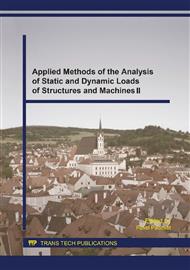p.300
p.304
p.308
p.312
p.316
p.320
p.324
p.328
p.332
Use of Materials with Pozzolanic Properties as Partial Cement Replacement in Development of Heat Resistant Composite
Abstract:
Cement is an extremely energy consuming material and its production leads to the emission of a vast amount of greenhouse gases. Cementitious concrete is a universal building material, which is used for the production of various structural elements. The paper describes the problem of cement production and its impact on the environment. This research deals with application of aluminous cement as binder component for the manufacture of refractory composites and with possibilities of further utilization of environmentally friendly materials with pozzolanic properties as a partial replacement of used aluminous cement. These materials are originating as waste in the building industry or by the recycling of cast-off materials. To reduce the costs and adverse effects on the environment was the binder system modified by finely ground ceramic powder and metakaolin. The experimental results present the values of flexural and compressive strength investigated on a series of composite specimens with dimensions of 40×40×160 mm3 and 10, 20 and 30 % of cement replacement. The aim of the present work is to apply the mentioned pozzolanic materials and reach the suitable composite with the sufficient heat resistance and residual mechanical parameters after gradual temperature loading.
Info:
Periodical:
Pages:
316-319
Citation:
Online since:
February 2016
Authors:
Price:
Сopyright:
© 2016 Trans Tech Publications Ltd. All Rights Reserved
Share:
Citation:


